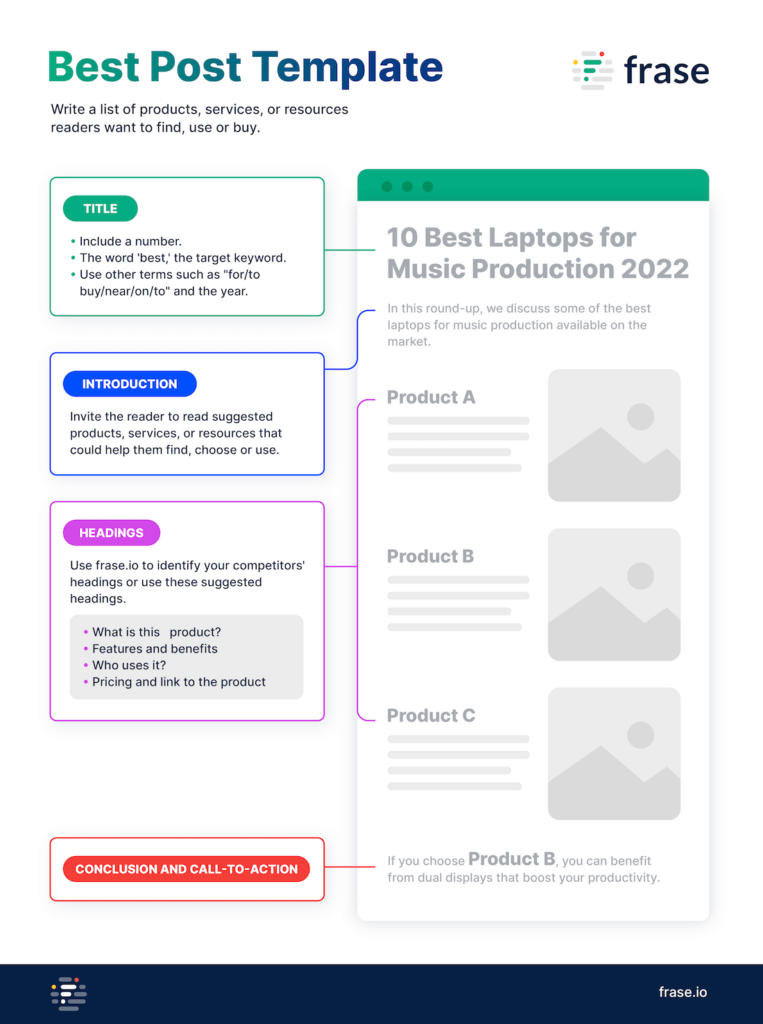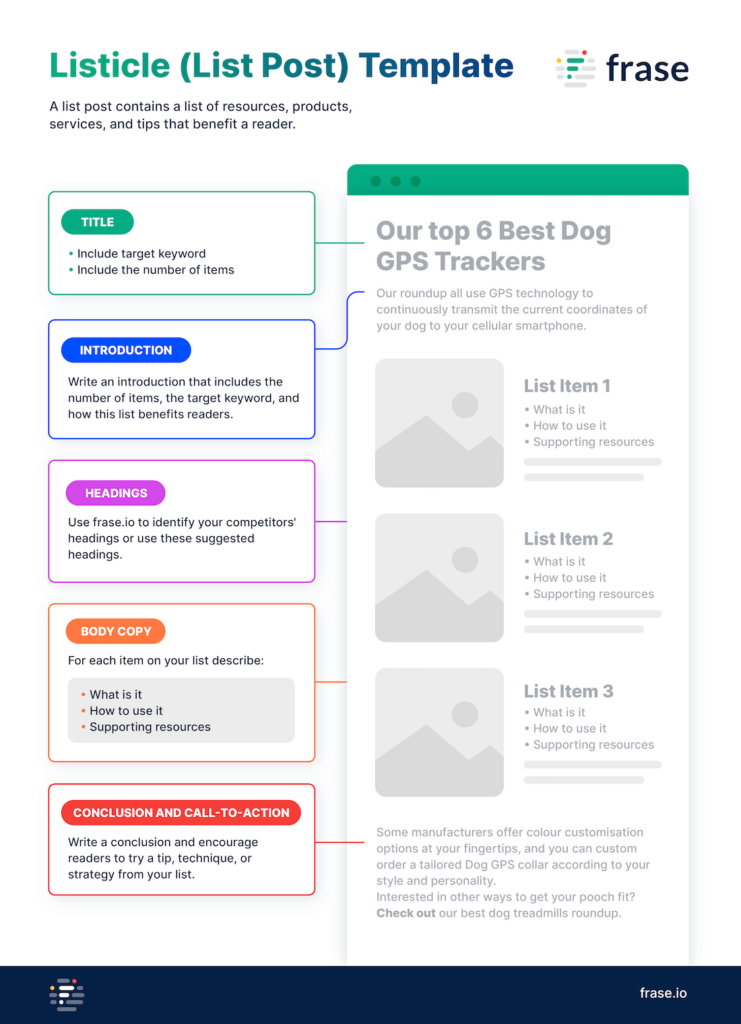Discover how to streamline your blogging process with these 20 proven blog post templates for captivating and effective writing.

Image courtesy of via DALL-E 3
Table of Contents
- Introduction: Understanding Blog Post Templates
- Choosing the Right Blog Post Template
- Basic Blog Post Template Structures
- Creating Your Own Blog Post Template
- Using Blog Post Templates Effectively
- Examples of Popular Blog Post Templates
- Common Mistakes to Avoid When Using Templates
- Summarizing the Benefits of Blog Post Templates
- Frequently Asked Questions (FAQs)
Introduction: Understanding Blog Post Templates
Blog post templates are tools that can help make the process of writing easier and more organized. They provide a structure or format to follow when creating posts, similar to how a recipe gives you step-by-step instructions on cooking a meal or a book report format guides you on what to include when writing about a book.
What Are Blog Post Templates?
Blog post templates are pre-designed formats that outline the structure of a blog post. They often include headings, subheadings, and sections for different types of content. Think of it as a blueprint that you can use to craft your post. For example, a recipe template would list the ingredients needed, the steps to follow, and maybe even some tips for cooking.
Why Use Blog Post Templates?
Using blog post templates can save you time and keep your writing organized. Templates provide a clear outline of what content to include in your post, making it easier to brainstorm ideas and ensure you cover all the necessary information. By following a template, you can also maintain consistency in your blog posts and develop a cohesive writing style.
Choosing the Right Blog Post Template
When it comes to writing a blog post, selecting the right template is crucial. The template you choose will determine how well your content aligns with your goals, resonates with your audience, and reflects your blog’s unique style. Here are some key factors to consider when choosing the perfect blog post template:
Considering Your Blog’s Goal
Before picking a template, think about what you want to achieve with your blog post. Are you trying to inform, entertain, persuade, or engage your readers? Different goals may require different structures, so it’s essential to select a template that best suits your objective.
Knowing Your Audience
Understanding who your audience is will help you tailor your content to their preferences. Consider the demographics, interests, and needs of your readers when choosing a template. This way, you can create content that resonates with them and keeps them coming back for more.
Matching Your Blog’s Style
Your blog has a unique voice, tone, and style that sets it apart from others. Make sure the template you choose complements your blog’s overall vibe. Whether your blog is casual and conversational or formal and informative, your template should reflect this consistency throughout your posts.
Basic Blog Post Template Structures
In this section, we will introduce you to simple and common structures of blog post templates that are easy to follow. These templates can help you write blog posts more efficiently and effectively.
Image courtesy of www.ryrob.com via Google Images
The Listicle Template
Have you ever read a blog post that lists “Top 10” things you must try or “5 Best Tips” for something? That’s a listicle! It’s a popular and easy-to-follow template where information is presented in a list format. Each item is usually brief and to the point, making it easy for readers to digest.
The How-To Template
Do you want to teach your readers how to do something step by step? The how-to template is perfect for that! You can break down a process into easy-to-follow steps, making it simple for your audience to understand and implement your instructions.
The Review Template
Have you ever wanted to share your thoughts on a book, movie, or product with your readers? The review template is a great way to structure your opinions and provide valuable insights. You can talk about the pros and cons, share your overall rating, and help your audience make informed decisions.
Creating Your Own Blog Post Template
Guiding readers on how to create their own blog post templates that suit their unique style and content needs.
Identifying Your Blog’s Needs
Before creating your own blog post template, it’s essential to think about what you need based on your blog’s focus and style. Consider the type of content you usually create and the structure that best suits it. If you often write product reviews, you might want a template that includes sections for features, pros, cons, and a final recommendation. Or if you write personal stories, your template could include sections for setting the scene, sharing your experience, and reflecting on the lesson learned.
Designing the Layout
Once you’ve identified your blog’s needs, the next step is to design the layout of your template. Start by outlining the main sections of your post, such as introduction, main content, and conclusion. Then, decide on the headings and subheadings you’ll use to organize your ideas. Make sure to leave space for images, quotes, or other elements that are important to your blog’s style. Don’t forget to consider the overall look and feel of your template to ensure it reflects your blog’s branding and personality.
Testing and Tweaking
After designing your template, it’s time to put it to the test. Write a blog post using your new template and see how it flows. Pay attention to any areas that feel awkward or don’t work as well as you’d hoped. Don’t be afraid to make changes and tweak your template until it fits your needs perfectly. Remember, creating a blog post template is a process of trial and error, so be patient with yourself as you refine and improve it over time.
Using Blog Post Templates Effectively
When it comes to writing blog posts, using templates can be a game-changer. They not only save time but also help keep your writing organized and on track. To make the most out of blog post templates, here are some tips and strategies to follow:

Image courtesy of www.frase.io via Google Images
Sticking to the Structure
One of the key elements of using blog post templates effectively is to stick to the structure provided. Templates are designed to guide you through the writing process, so make sure to follow the sections and headings as outlined. This will not only ensure consistency but also improve the overall quality of your content.
Adding Personal Touches
While following a template, don’t forget to add your own voice and style to the content. Templates are meant to provide a framework, but it’s essential to inject your personality into the writing. This will help engage your readers and make your content more authentic and relatable.
Reviewing and Editing
Even when using a template, it’s crucial to review and edit your work before publishing. Templates can help streamline the writing process, but they should not replace the necessary steps of proofreading and refining your content. Take the time to review your post, make edits, and ensure it meets your standards before sharing it with your audience.
Examples of Popular Blog Post Templates
When it comes to creating engaging and effective blog posts, utilizing popular templates can help guide your writing process. Below are two popular blog post templates with examples to give you a better understanding of how they can be implemented.
The Storytelling Template
A storytelling template is a great way to connect with your readers on a personal level and engage them with your content. By weaving a narrative into your blog post, you can create a compelling and memorable piece that resonates with your audience.
For example, if you’re a travel blogger sharing your recent trip to Paris, you could start by setting the scene with vivid descriptions of the city’s iconic landmarks. Then, you could share personal anecdotes and experiences from your journey, allowing readers to feel like they’re right there with you exploring the streets of Paris.
By using a storytelling template, you can bring your blog posts to life and captivate your audience with engaging narratives that leave a lasting impact.
The Case Study Template
A case study template is an effective way to present information in a persuasive and structured manner. Whether you’re showcasing a successful project, highlighting a client success story, or sharing research findings, a case study template can help you demonstrate the value of your work in a clear and compelling way.
For instance, if you’re a marketing consultant writing a case study on a recent campaign, you could start by outlining the client’s goals and objectives. Then, you could detail the strategies and tactics implemented, along with the results achieved, such as increased website traffic or higher conversion rates.
By using a case study template, you can provide real-world examples and evidence to support your claims, making your blog posts more credible and convincing to your readers.
Common Mistakes to Avoid When Using Templates
Over-Reliance on Templates

Image courtesy of www.frase.io via Google Images
One common mistake bloggers make when using templates is relying too heavily on them. While templates can provide a helpful structure for your writing, it’s important to remember to inject your personal creativity and voice into your content. Templates are meant to guide you, not dictate every word you write. Make sure to add your unique flair to make your blog posts stand out.
Neglecting Originality
Another pitfall to avoid is neglecting originality in your writing. Templates can be a great starting point, but be cautious not to let them stifle your creativity. It’s essential to ensure that your content remains fresh, unique, and engaging. Don’t be afraid to deviate from the template where necessary to maintain authenticity and keep your readers interested.
Summarizing the Benefits of Blog Post Templates
In the world of blogging, utilizing blog post templates can be a game-changer. Let’s review the key advantages of incorporating these structured formats into your writing process.
Time-Saving
One major benefit of blog post templates is the time they save. By providing a pre-set structure to follow, templates eliminate the need to start from scratch with each new post. This allows you to focus more on crafting your content rather than spending time figuring out how to format it.
Consistency in Style
Consistency is crucial in the blogging world. Templates help you maintain a uniform style across your posts, ensuring that your audience knows what to expect from your content. This consistency builds trust with your readers and establishes your brand voice.
Enhanced Organization
Blog post templates promote enhanced organization by guiding your thoughts and ideas into a logical flow. With predetermined sections and headings, templates help you structure your content effectively, making it easier for both you and your readers to navigate through the post.
Want to turn these SEO insights into real results? Seorocket is an all-in-one AI SEO solution that uses the power of AI to analyze your competition and craft high-ranking content.
Seorocket offers a suite of powerful tools, including a Keyword Researcher to find the most profitable keywords, an AI Writer to generate unique and Google-friendly content, and an Automatic Publisher to schedule and publish your content directly to your website. Plus, you’ll get real-time performance tracking so you can see exactly what’s working and make adjustments as needed.
Stop just reading about SEO – take action with Seorocket and skyrocket your search rankings today. Sign up for a free trial and see the difference Seorocket can make for your website!
Frequently Asked Questions (FAQs)
Addressing common questions readers might have about using blog post templates.
Are templates necessary for good blogging?
Templates are not absolutely necessary for successful blog posts, but they can be incredibly helpful. Templates provide a structured framework that can save you time, keep your writing organized, and ensure you cover all the important points you want to convey. They also help maintain consistency in your blog posts, which can be appealing to readers. While using templates can be beneficial, it’s ultimately up to you to decide if they work well for your blogging style.
Can I modify a template to fit my style?
Absolutely! Templates are meant to be flexible and adaptable to suit your personal writing style. You can modify a template by adding or removing sections, adjusting the order of information, changing the tone or voice, and incorporating your own creative elements. Tailoring a template to fit your unique style can make your blog posts more engaging and authentic, allowing you to connect better with your audience.
What should I do if I find following a template difficult?
If you find it challenging to follow a template, don’t worry! There are a few things you can try to make it easier. First, take a step back and review the template to see if there are any parts causing confusion. Break down the template into smaller sections and work on each part separately. You can also seek inspiration from similar blogs or websites to see how they structure their posts. Remember, practice makes perfect, so keep experimenting with different templates until you find one that works best for you.







